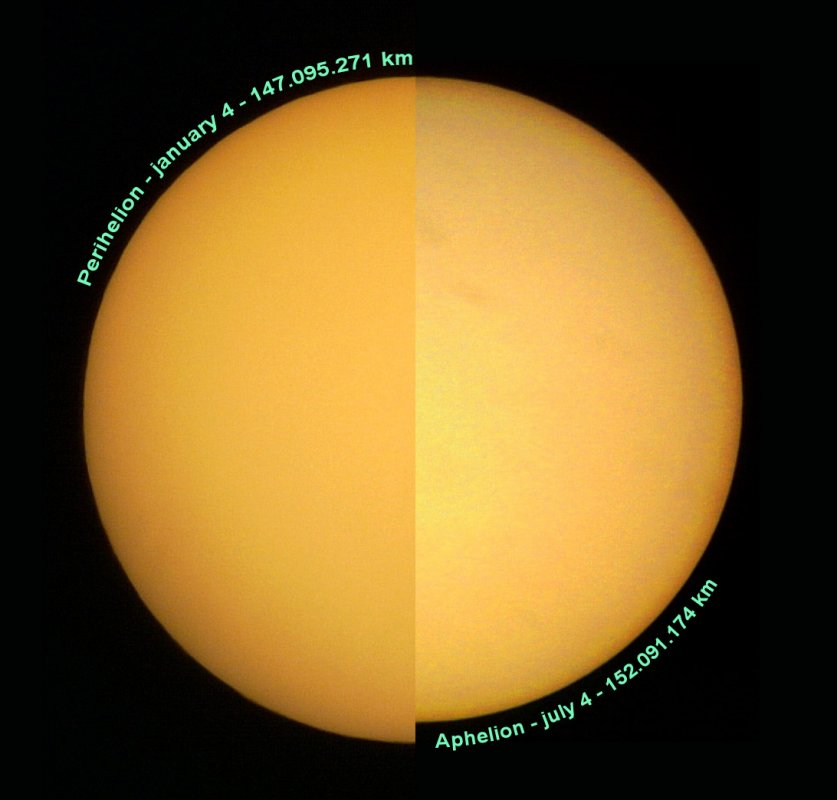At the beginning of July, our planet passes aphelion — the farthest point of its orbit from the Sun. This year it will happen on July 4. This date is indicated in astronomical calendars, and the media also pay little attention to it. What is remarkable about this event and is it possible to notice it somehow?

Aphelion is passed by all bodies orbiting the Sun. At this point, they are the furthest away from it and move the slowest. There are only two ways to avoid this. The first is to have an ideal circular orbit, equidistant from the central body in all its parts. But such an ideal option in nature is extremely unlikely. The second is to be on an open trajectory, approach the Sun in perihelion for the only time and leave its sphere of attraction forever. This happens to some comets.
Therefore, the passage of aphelion is not something extraordinary. Astronomers need to know about it in order to calculate the coordinates of celestial bodies — they are directly related to the position of the Earth in space.
The reasons why the moment of aphelion passage falls on different dates are exactly the same as in the case of perihelion: firstly, it is a non-integer number of days in the earth year, that is why it is necessary to periodically introduce a leap day. Secondly, the Earth does not really revolve around the Sun, but around the center of mass of the Solar System — an immaterial point that almost never coincides with the center of our luminary. Therefore, observations are not enough to determine the “real” aphelion: it is also necessary to take into account the gravitational influence of other planets, which requires complex calculations.

The diameter of the solar disk when observed from perihelion (left) and from aphelion does not differ so much as to cause significant seasonal changes
From here it is already easy to understand that we cannot directly see any phenomena related to the passage of aphelion by the Earth. The speed of its orbital motion, measured by the Doppler shift of the frequency of radio emission of quasars in the zodiacal constellations, almost does not change at this time, the angular diameter of the Sun’s disk at this moment practically does not differ from what it was the day before and will be the next day… We have already learned to determine the distance to the Moon with the help of laser location with an accuracy of several centimeters, but for this purpose several special reflectors have been installed on its surface. Obviously, there are no such devices on the solar surface and there will never be, since it is a constantly undulating ocean of incandescent plasma. But it’s still worth remembering: at the height of summer in the Northern Hemisphere, our planet is 3.3% farther from the Sun than when we have winter. The apparent diameters of the solar disk on the corresponding dates (31’27” and 32’31”) differ by the same modest amount. That is, contrary to the widespread misconception, the seasons on Earth are not determined by the distance to the central luminary. The most important factor in this case is the inclination of the earth’s equator to the ecliptic (the plane of the earth’s orbit). Astronomers have been successfully measuring this slope for a long time, and it, like everything else in our changing world, also does not remain constant. But this is a story entirely different.…
Follow us on Twitter to get the most interesting space news in time
https://twitter.com/ust_magazine
